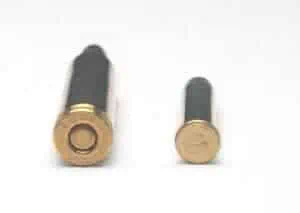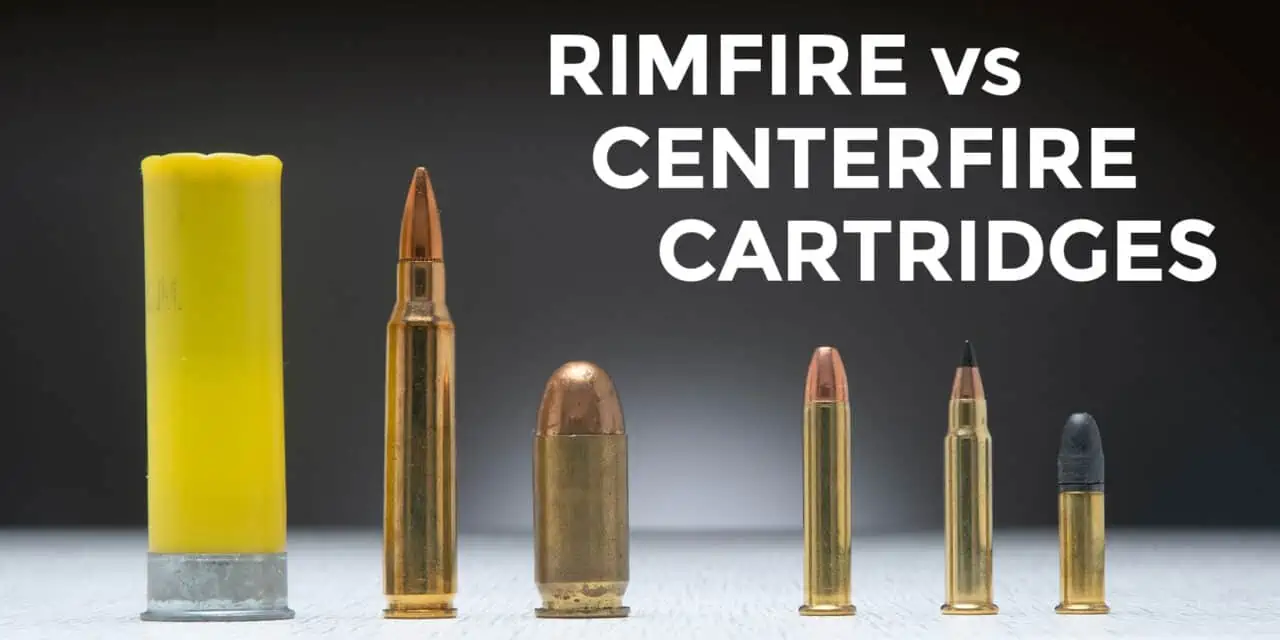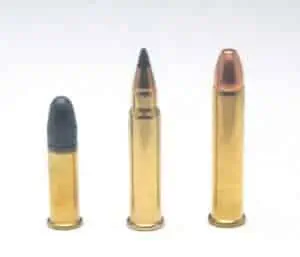Rimfire vs Centerfire: A Primer on Primers
You can describe any modern ammunition cartridge in a number of ways. There’s the type with a rim at the end of the casing or where the case is the same diameter all the way through. It could be whether the cylinder of the cartridge has a taper, or whether the neck of the cartridge is smaller than the base. Today, we’ll look at two different ways of making a cartridge go “BANG,” and describe the differences of rimfire vs centerfire cartridges.
First, a quick rundown of what’s inside a modern round of ammunition. Up front, there’s (usually) a bullet, and gunpowder to send the bullet on its way down the barrel. Then there’s the case, which holds everything together, and a primer, which is at the rear of the cartridge. How that primer is located on the rear of the cartridge is what makes the difference between a rimfire vs a centerfire round.
Rimfire vs Centerfire: It’s All About The Bang
When we talk about the primer of a round of ammunition, we’re talking about a thin piece of metal that contains a chemical compound (originally mercury fulminate) which emits a spark when struck. The firing pin of the gun hits that thin metal and transfers the energy of the impact to the priming compound. This compound ignites, which touches off the gunpowder, and the gun goes bang.
The biggest difference with rimfire vs centerfire ammo is where that thin metal container which holds the primer is located, and how it is integrated into the cartridge. The primer inside a rimfire round is contained in a thin metal rim around the bottom of the case. The primer for a centerfire round is inside a small cup in the center of the case. Firing a rimfire round starts on the rim of the case, and firing a centerfire round begins at the center of the rear of the case.
Heavy Metal? No, Thin Brass
Getting a primer, any kind of primer, into the cartridge proved to be quite a chore. Using a priming compound to set off a round of ammo has been around since the early 1820’s, when percussion caps were invented. Combining the percussion cap, bullet, powder and case took longer, and was first accomplished in 1845 with the introduction of the 6mm Flobert ( aka 22 BB) round.
6mm Flobert is a very low powered round. That’s also true of many of the early rimfire rounds such as 22 Short and 22 Long. There were other cartridges as well, such as .56-56 Spencer, the first metallic cartridge used by the military in the iconic Spencer rifle.
Aside from all being rimfire cartridges, all of these rounds used black powder. That meant they were very underpowered compared to modern rounds, which use high pressure smokeless powder to drive the bullet forward at higher velocities than what is possible with black powder. The higher velocities mean thicker cartridge walls are needed to contain the pressure of the expanding powder. That’s where a rimfire round runs into trouble.
Rimfire Is Built Differently
The walls of a rimfire cartridge need to be thinner so the energy of the firing pin can be transferred to the primer. But thin cartridge walls can’t handle the pressure of high power cartridges, which is why most ammunition sold these days is centerfire ammunition rather than rimfire.

The primer cup in the center of the cartridge on the round on the left indicates it’s a centerfire round
As we said before, the primer in a centerfire cartridge is held in a small cup held in a pocket in the center of the back of the case. That cup is made of a thin piece of metal (usually brass) that is crushed when struck by the firing pin, touching off the primer and firing the round. Because the cup fits into a pocket from the shell casing, the metal of the casing can be as thick as needed to contain the force of the gunpowder igniting, leading to high-power rounds like .44 Magnum, .50 BMG and a host of other types of ammunition
Centerfire Takes Over… Almost
This flexibility means there is a big difference in what’s available in rimfire vs centerfire ammo. .22 Long Rifle (22LR) is one of the oldest cartridges in common use, and it dominates the rimfire market. Other common rimfire cartridges are .22 Winchester Magnum (aka 22WMR or 22 Magnum and 17 HMR. 22 Magnum is exactly what it sounds like: A more powerful version of the 22LR cartridge. 22 WMR is useful for targets which require a bit more power than what 22LR can provide, and it’s not bad as a defensive cartridge either.
The idea for 22 Magnum began with Winchester. 17 HMR, on the other hand, is a creation of Hornady ammunition. 22 WMR is meant to be a ramped up version of 22LR. 17 HMR has a different task. A 17 HMR round fires a small (.17 caliber), lightweight (17-20 grain) cartridge that zips along at 2600 fps or faster. This combination makes it an excellent round for small game and varmint hunting out to 100 yards and beyond. These are ranges where 22LR can run out of energy and fall short of the target.
Shoot What Works For You
We should probably discuss the variety of carriages for centerfire ammunition, but since that’s essentially every other type of ammunition on the planet other than 22LR, 22 WMR or 17 HMR, we’d soon run out of room. Suffice to say that rimfire ammunition (especially 22LR) has its own purpose and use. 22LR is less costly than centerfire ammunition. However, it is very effective and capable inside of its niche, with millions of rounds fired each year by gun owners all over the world.
Because each type of round has a different role in the firearms world, the question isn’t rimfire vs centerfire. The question is, how does each of these types of rounds fit into the kinds of shooting you enjoy. For instance, I’ll train young people who are new to guns on firearms using 22LR. That round is also very popular for hunting small game, shooting competitions like Rimfire Challenge and training events like the Appleseed Project. My centerfire guns are the larger part of my gun collection. I use them to defend my life as well as shooting competitions like IDPA, hunting larger game like feral hogs and attending training classes such as Gunsite.
The ammunition of today is the product of decades of development and research and is the best quality ammo that’s ever been available to gun owners. Whichever rimfire or centerfire ammo you choose to use in your guns, remember that a gun (or the ammo it fires) is only as safe and accurate as the person pulling the trigger. Enjoy the ammo choices we have today, and make sure to do so safely.



